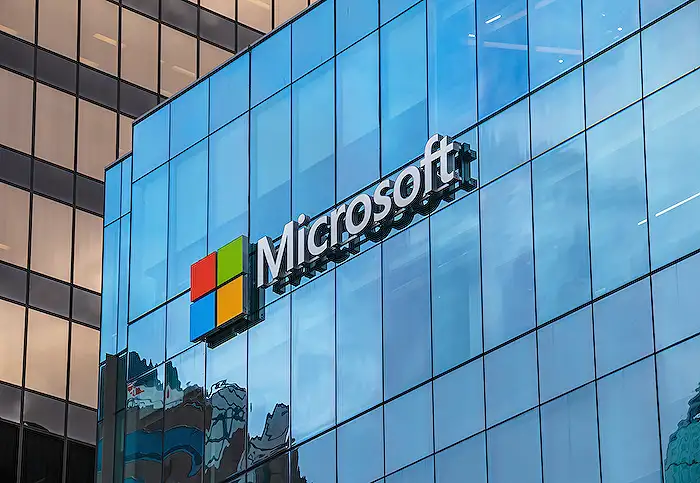- All of Microsoft
- Power Platform
My Top 5 Announcements at Microsoft Build 2025
Multi-Agent Agent Feed Create agent from plan Power Automate for Desktop Copilot Studio Microsoft Build 2025
Key insights
- Copilot Studio lets developers build, manage, and connect AI Agents across different apps and systems. It now supports multi-agent orchestration, so agents can work together to handle complex tasks.
- AI Agents are specialized tools that automate specific business tasks. They help improve decision-making and boost efficiency by integrating into existing workflows.
- Multi-agent orchestration is a new feature that allows multiple AI agents to collaborate and delegate tasks among themselves. This makes it easier for businesses to scale and manage complicated workflows.
- Enterprise AI Adoption was a key theme, focusing on using AI to drive digital transformation in organizations. Developers are encouraged to use these technologies for both automation and strategic decisions.
- Trust, security, and governance remain top priorities for Microsoft when developing new AI solutions, ensuring these tools are reliable and safe for enterprise use.
- The announcements at Microsoft Build 2025 highlight a shift toward more collaborative, integrated AI solutions that empower developers and improve business operations.
Introduction: Microsoft Build 2025 Highlights
The recent Microsoft Build 2025 conference, held from May 19 to 22, captured the attention of the global developer community with its focus on innovation in artificial intelligence (AI) and software development. In a detailed YouTube video, Daniel Christian [MVP] provided an insightful overview of his top five key announcements from the event, particularly those related to Copilot Studio and the Power Platform. Microsoft’s commitment to empowering developers was evident throughout the conference, as new tools and features were unveiled to streamline workflows and enhance productivity.
With over 50 announcements made during the event, developers were given a glimpse into the future of AI-driven enterprise solutions and collaborative technologies. This article summarizes the main points from Daniel Christian’s review, offering an objective look at the implications and potential tradeoffs of these advancements.
Exploring Copilot Studio and AI Agents
One of the central themes of Microsoft Build 2025 was the evolution of Copilot Studio and the introduction of advanced AI Agents. These technologies are designed to make AI more accessible and practical for businesses of all sizes. According to Daniel Christian, Copilot Studio now allows developers to create, manage, and integrate AI agents across a variety of applications and systems, which marks a significant step forward in workflow automation.
The new features enable multi-agent orchestration, where different AI agents can collaborate and delegate tasks among themselves. This approach not only increases the complexity of workflows that can be managed but also addresses the challenge of scalability. However, while this integration brings greater efficiency, it also requires careful planning to ensure seamless coordination between agents, avoiding potential conflicts or redundancies.
Boosting Productivity and Integration
A major advantage highlighted in the conference is the potential for enhanced productivity. By leveraging Copilot Studio and AI Agents, developers can automate repetitive tasks and focus on higher-value activities. The multi-agent orchestration capability particularly stands out, as it enables teams to build more sophisticated solutions without increasing manual effort.
Moreover, the seamless integration of these tools across different business systems can improve collaboration between departments. While this integration simplifies processes and saves time, organizations must also consider the learning curve associated with adopting new technologies and the need for ongoing support to maximize their benefits.
Emphasizing Trust, Security, and Governance
Another key takeaway from Microsoft Build 2025 is the company’s focus on trust, security, and governance in AI development. As AI adoption grows, ensuring data privacy and security becomes increasingly important. Microsoft has introduced governance features to help organizations maintain control over their AI systems, reinforcing the reliability of these solutions.
While these measures provide essential safeguards, they also introduce additional layers of complexity that organizations must manage. Balancing robust security protocols with ease of use remains a challenge, highlighting the need for clear policies and ongoing education for both developers and end-users.
New Features in Power Automate for Desktop
The conference also showcased significant updates to Power Automate for Desktop, further expanding the automation possibilities for businesses. These enhancements aim to simplify the creation and management of automated workflows, making it easier for users to implement automation without extensive coding knowledge.
However, as automation becomes more accessible, organizations must address the risk of over-automation, where too many processes become dependent on automated systems. Finding the right balance between automation and human oversight is crucial to prevent errors and maintain operational flexibility.
Conclusion: A Transformative Step Forward
In summary, Daniel Christian’s review of Microsoft Build 2025 underlines the company’s dedication to advancing AI technologies for the enterprise market. The new capabilities in Copilot Studio, AI Agents, and Power Automate for Desktop offer exciting opportunities for increased efficiency and collaboration. Nevertheless, organizations must carefully navigate the challenges of integration, security, and governance to fully realize the benefits of these innovations.
As Microsoft continues to invest in developer tools and AI-driven solutions, the tradeoffs between productivity, security, and operational complexity will shape how businesses adopt and implement these technologies in the years ahead.

Keywords
Microsoft Build 2025 announcements Microsoft Build highlights top Microsoft innovations 2025 best Microsoft developer news new features at Microsoft Build AI updates from Microsoft Build cloud computing trends 2025 developer tools launch
